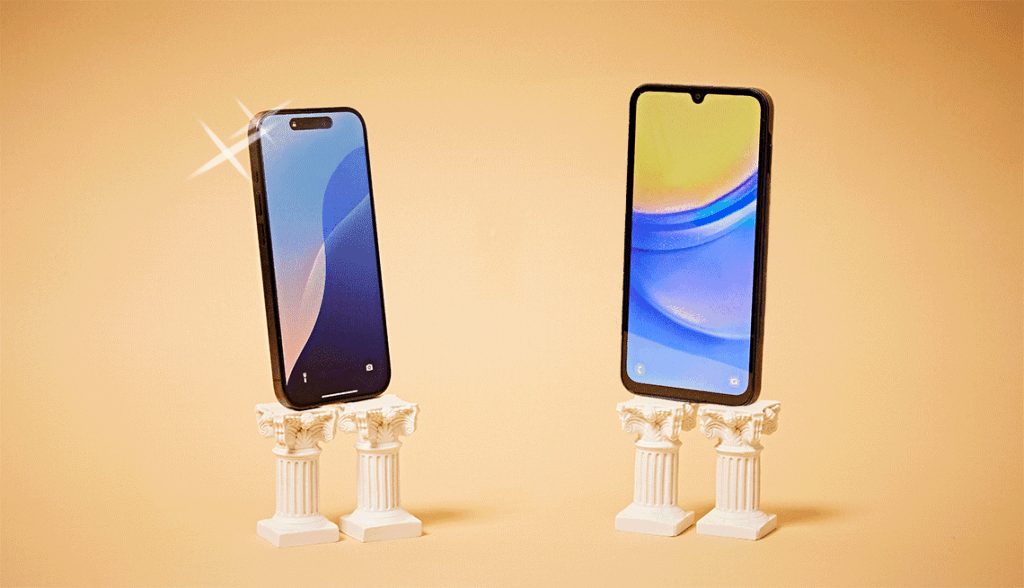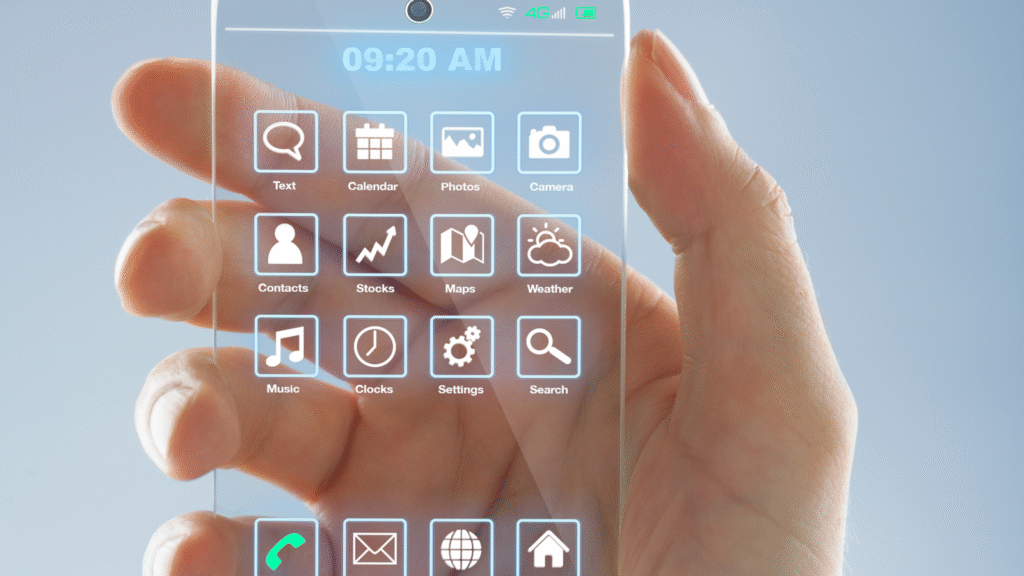From luxury to necessity, mobiles and tablets have revolutionized how we live, work, communicate, learn, and even entertain ourselves. What was once just a tool for making calls is now a portal to the world—fitting in the palm of our hand. Whether it’s a smartphone used to run a business or a tablet used in a classroom, these devices have become central to our daily experiences.
✅ Key Takeaway
Mobiles and tablets are not just gadgets—they’re life companions. They shape how we learn, connect, work, and relax. The challenge lies not in their capability but in how we choose to use them. Smart usage equals smart living.
📲What are Mobiles & Tablets?
Understanding Mobile Phones
Mobile phones, or smartphones, are handheld devices that combine cellular calling capabilities with computing power. Today’s smartphones offer:
- Internet browsing
- Multimedia consumption
- Mobile apps (games, business tools, utilities)
- High-resolution photography
- AI integration
Popular operating systems include Android and iOS, and brands like Apple, Samsung, Xiaomi, and Google dominate the global market.
What Makes Tablets Different?
Tablets are larger, touch-screen devices designed to fill the gap between smartphones and laptops. While tablets don’t always support calling, they excel in:
- Reading and writing
- Watching videos
- Drawing and graphic design
- Productivity and multitasking
Popular tablets include Apple’s iPad series, Samsung Galaxy Tab, Amazon Fire, and Microsoft Surface.
🌐How Have Mobiles & Tablets Evolved Over the Years?

A Quick History of Mobile Devices
- 1980s–1990s: Mobile phones were bulky and limited to calls.
- Early 2000s: Introduction of SMS, cameras, and early mobile internet (WAP).
- 2007: The iPhone redefined smartphones with a full touch interface and app ecosystem.
- 2010s: Rise of Android, mobile apps explosion, and tablet growth.
- 2020s: AI integration, foldable phones, 5G, and edge-to-edge screens.
Evolution of Tablets
The tablet journey began with bulky Windows-based devices in the early 2000s. But the release of the iPad in 2010 changed the game—offering lightweight, sleek, and powerful experiences. Android and Windows followed with more specialized devices for work and play.
🧠How Do Mobiles & Tablets Impact Daily Life?
Communication
Smartphones have revolutionized communication with:
- Voice/video calls
- Messaging apps like WhatsApp, Telegram
- Email on the go
- Social media engagement
Work & Productivity
With tools like Google Workspace, Microsoft Office, and Asana, users now:
- Manage remote work
- Host meetings (Zoom, Teams)
- Send documents
- Collaborate in real time
Tablets are also used with styluses and keyboards for sketching, note-taking, and lightweight computing.
Learning & Education
E-learning apps, educational games, and digital textbooks have made tablets powerful tools in education. Platforms like Khan Academy, BYJU’s, and Coursera are easily accessible via mobile and tablet devices.
🎮What Role Do These Devices Play in Entertainment?
Streaming & Media
Mobile devices are the top tools for consuming content:
- YouTube, Netflix, Amazon Prime
- Music streaming via Spotify, Apple Music
- Audiobooks and podcasts
Gaming
With powerful processors and graphics, mobiles and tablets have become major gaming platforms:
- Mobile-exclusive games like PUBG, Clash of Clans, and Genshin Impact
- Cloud gaming with services like Xbox Cloud and NVIDIA GeForce Now
Social Media & Content Creation
Influencers and creators use phones and tablets for:
- Shooting and editing videos
- Managing content calendars
- Going live on platforms like TikTok, Instagram, and Facebook
🛠️What are the Key Features of Modern Mobiles & Tablets?

High-Resolution Cameras
Most smartphones now offer multi-lens systems, supporting ultra-wide, macro, and portrait photography—rivaling DSLRs.
Fast Charging & Battery Life
Technologies like 65W fast charging and wireless charging allow hours of use after just minutes of charging.
Biometrics & Security
Face ID, fingerprint sensors, and encryption offer enhanced privacy and secure app access.
AI and Voice Assistants
Google Assistant, Siri, and Bixby allow hands-free operations—setting reminders, searching the web, or automating tasks.
⚖️What Are the Pros and Cons of Mobile & Tablet Usage?
Advantages
| Feature | Benefits |
|---|---|
| Portability | Access information and apps anywhere |
| Connectivity | Real-time communication, global reach |
| Multifunctionality | Camera, calendar, email, shopping, health tracking—all in one |
| Personalization | Custom apps, widgets, themes, and settings |
| Accessibility | Screen readers, voice commands, and magnifiers help users with disabilities |
Disadvantages
| Issue | Concerns |
|---|---|
| Screen time | Excessive use can lead to eye strain, sleep disruption, and addiction |
| Privacy | Data breaches and tracking are increasing concerns |
| Distraction | Social media and gaming can impact focus and productivity |
| Cost | Flagship phones and tablets can be very expensive |
🧾What Does the Future Look Like for Mobiles & Tablets?
Foldable and Rollable Displays
Brands like Samsung, Huawei, and Oppo are experimenting with foldable and rollable screens that allow larger displays without increasing device size.
Integration with Smart Devices
Mobiles and tablets are becoming the control hubs for:
- Smart homes
- Wearable devices
- IoT-connected environments
AI-Powered Interfaces
Future devices may feature:
- Smarter AI assistants
- Real-time translation
- Predictive typing and content suggestions
Sustainable & Modular Designs
The push for e-waste reduction may drive:
- Longer-lasting devices
- Recyclable materials
- DIY-repairable phones (e.g., Fairphone)
🧾 Conclusion
Mobiles and tablets have become the cornerstone of modern life—serving as communication tools, entertainment centers, workstations, and classrooms. They empower people globally, especially in areas lacking traditional infrastructure. However, with great power comes great responsibility. Balancing convenience with mindful usage, and innovation with ethical concerns, is the key to unlocking their full potential.
🙋♀️FAQs
1. What’s the main difference between a tablet and a smartphone?
Smartphones are primarily used for communication and are more compact. Tablets offer larger screens, making them ideal for reading, drawing, and productivity tasks, but they may lack cellular calling features.
2. Are tablets good for students?
Yes, tablets are great for note-taking, reading e-books, accessing learning platforms, and even creative activities like drawing or coding.
3. Can smartphones replace laptops?
For basic tasks like emails, browsing, and social media—yes. But for intensive work (programming, video editing), laptops still offer more power and flexibility.
4. How do I choose between Android and iOS?
It depends on your budget, app preferences, and ecosystem. iOS offers a premium experience with tighter integration, while Android gives more customization and a wider price range.
5. Are foldable phones durable?
Modern foldable phones have improved significantly, but they’re still more fragile than traditional smartphones and often more expensive.
6. How do mobile devices impact mental health?
Overuse can lead to anxiety, depression, and disrupted sleep. Mindful usage and screen-time management are essential for mental well-being.
7. Are mobile apps safe to use?
Most apps are safe, but some can contain malware or collect excessive data. Always download from trusted sources and review app permissions.